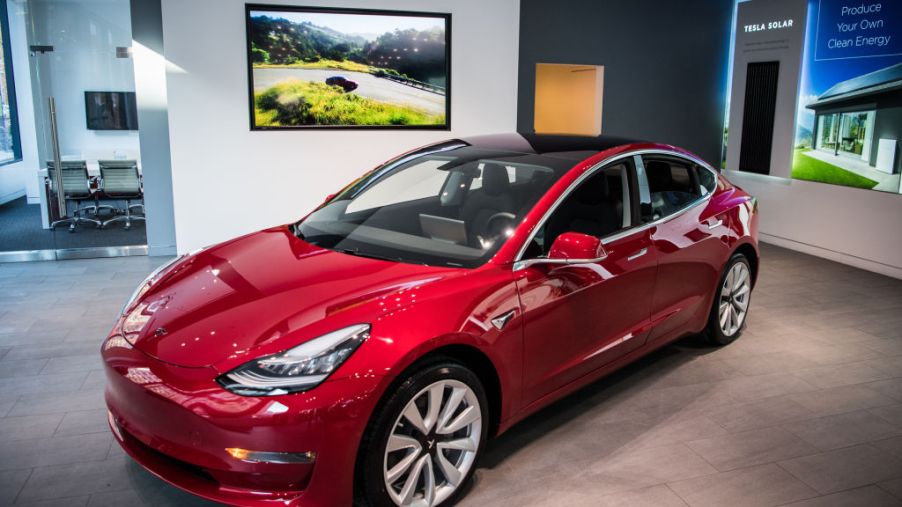
Here’s What It’s Like to Drive a Tesla Model 3 on a Race Track
Cars tend to handle much differently on the track versus the street, making this test of a fully-stock, non-performance Model 3 a worthwhile evaluation of Tesla’s engineering and ability to generate a vehicle that both performs well on the track and meets the needs of a daily driver.
The source video provided by YouTube channel “TheSmokingTire”, displays Model 3 base performance on a closed track and has highlighted several areas where the vehicle stands out. These successes include snappy handling, instantaneous torque, highly responsive braking, and stand-out traction control.
The Model 3 is intended to help bring electric vehicles to wide-market adoption, but the question is, can a non-performance Model 3 hang on the track? We’ve seen the Model 3 Performance blow the Hellcat Charger away on the drag strip, and eke out a narrow win in a moderately short rolling race.
How does the base Model 3 perform on the race track?
The base Model 3 performs surprisingly well on the tarmac. Smooth braking and adequate downforce ensure cornering is smooth, though the accelerator requires more pressure to take hold than the brakes—which are very responsive. Traction control, which can get in the way when stepping into the throttle while exiting a turn, kicks in only when needed, allowing drivers to get the most out of the torque-heavy electric motor.
Stiffer suspension than the Model X and Model S (even the P100D!) makes for a much snappier, more crisp ride. Topping our around 120 miles per hour, the track session displayed surprisingly high-quality track handling for the mass market model Tesla—despite being a non-performance model.
Improvements offered by the performance model
The Model 3 Performance (P3) offers multiple improvements over the Standard Model. A second electric motor provides all-wheel drive alongside a substantially faster 0-to-60 time—5.1 seconds for the standard model drops to just 3.5 seconds with the performance model
Three other strong improvements are the driving range maximum of the Performance Model—220 miles on the Standard become 310 for the Performance—lowered suspension for better handling, and a carbon fiber spoiler for added downforce, allowing drivers to take corners at higher speeds without losing control.
What can the Model 3 be compared to?
According to TheSmokingTire, the Model 3 is readily comparable to the GTR—if you cut the RB28’s power in half and wear noise-canceling headphones while driving it. Silent, but surprisingly aggressive, track performance from the Model 3 seems to stand up to one of the best-known tuner cars. The GT-R was notable for several reasons, specifically the all-wheel-drive system from the R34 Skyline and the power provided by the RB28 powerplant.
Summary of the ride
Tesla’s Model 3 provides a thrilling but downgraded version of the ride provided by an R34 Skyline GTR—less power. In terms of size and handling, the Model 3 bears a strong similarity to luxury sedans in the same class as the BMW M3 and Alfa Romeo Quadrifoglio. The Model 3 has a substantially shorter turning radius than the larger GT-R, however, providing a more crisp feeling on the track.
What separates the Model 3 from other Teslas?
The Model 3 presents a beautiful sport sedan appearance in a wide variety of color options. Below the paint is a frame largely composed of steel—Model S and Model X variants used primarily aluminum to shed weight, but the cost of aluminum was presented in both body repair and MSRP costs.
The Model 3, as depicted in this video is a single-engine, rear-wheel-drive electric vehicle with 258 hp and 307 lb-ft of torque. This electric motor is geared for high efficiency with slightly lower performance than the motors found in the Model X and Model S variants.


